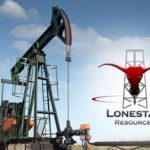CEO Bracken: “The Time has Come” for Acquisition Opportunities
Lonestar Resources (ticker: LNREF), a Fort Worth-based exploration and production company with operations focused on the Bakken and Eagle Ford shales, expects to set company production records in Q3’15 based on wells that continue to exceed third party estimates.
Q3’15 volumes are forecasted to average 6,500 BOEPD, marking respective increases of 12% and 39% compared to Q2’15 and Q3’14. Its quarterly exit rate is expected to surpass 7,000 BOEPD, setting another company record. Based on the higher than expected rates, LNR management is increasing its 2015 production guidance to a midpoint of 6,100 BOEPD from its previous midpoint estimate of 5,900 BOEPD.
Achieving the midpoint of its revised 2015 guidance would represent a year-over-year increase of 36%.
Powered by the Eagle Ford
Lonestar’s Eagle Ford Shale position, consisting of 34,360 net acres, contributed about 88% of volumes in Q2’15. Its Western Eagle Ford position amounted to about 60% of its overall volumes and is receiving the bulk of its 2015 drilling program. LNR anticipates drilling and completing 16 to 18 wells in fiscal 2015, with 11 expected to be completed in its Western Eagle Ford assets.
Although the majority of operations are focused on the Western Eagle Ford, Frank Bracken III, Chief Executive Officer of Lonestar Resources, says the company’s entire 2015 drilling program is beating expectations. “It’s really across the whole board,” he said in an exclusive interview with Oil & Gas 360®.
Supported by Low Drilling Costs, Solid Hedging
The company is well hedged for the remainder of 2015, with swaps covering 2,593 BOEPD at an average strike price of $82.58/barrel. The favorable hedges continue into 2016, with swaps covering 2,276 BOEPD (more than half of its projected volumes) at an average strike price of $77.15/barrel. Its EBITDAX for Q3’15 will remain consistent on a quarter-over-quarter basis despite a West Texas Intermediate price drop of roughly $12.00/barrel in the same time frame.
Despite the production growth, Lonestar’s 2015 drilling program expenditures will be held entirely within operational cash flows. Therefore, the majority of its $100 million in available liquidity stemming from its credit facility will be maintained. The company also struck a joint development agreement with IOG Capital in July, which calls for the the partner to contribute 90% of initial well costs on Lonestar operations. Lonestar’s working interest increases to 90% in those operations after IOG achieves a specified return.
Financial Stability Paves Way for Acquisition Opportunities
“The returns we’re generating are well past acceptable, it’s really more about having discipline of spending cash flow right now,” explained Bracken III. “Maintaining that cash flow secures our liquidity in excess of $100 million in our line of credit, and we can also capitalize on our joint development agreement with IOG Capital.”
Lonestar is also not pressured on any leasing terms – anywhere from 65% to 100% of its three Eagle Ford sections are held by production, and the remaining acreage has anywhere from two to four years of term remaining. The stability allows Lonestar to control its operational pace and maintain its balance sheet.
Bracken III said: “More than anything, it’s maintaining financial flexibility particularly in anticipation of pulling down some additional deals. Everything should have better economics and there should be a greater number of compelled sellers compared to the past, so we want to take advantage of farm-ins and small leasehold positions and save our dry powder for the fourth quarter and beyond to make some strategic acquisitions.”
NYSE or NASDAQ Listing on the Horizon
A next step in Lonestar’s growth story is securing a listing on the New York Stock Exchange or NASDAQ, a move that management believes would put the company on a level playing field with other successful U.S. producers.
“First and foremost, if we want to grow this company, we want access to the largest capital market in the world and certainly the one that’s best suited for our focus,” concluded Bracken III. “We believe that will put us in the position to garner much more sell-side support, allow us to raise equity and broaden our United States shareholder base.”








